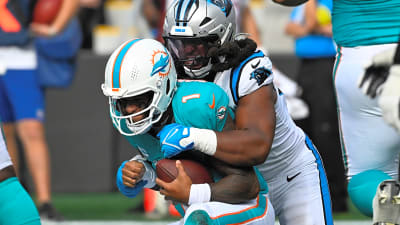We're back with another insightful article from the esteemed Dr. John Baker, our medical professional on the North Shore of Oahu who works with surfers like Landon McNamara and Kala Grace (to name a few), this time with some advice to help you from the ground up.
In surfing, your feet are your only point of contact with the board. They’re the roots of your stance, your springs in dynamic turns, and your first line of feedback from the wave. Yet, for most surfers, the foot is an afterthought — confined to a narrow wetsuit bootie or flattened against the wax with little awareness. That oversight creates a cascade.
The Pain v. The Problem
When a surfer walks into my clinic with chronic knee tightness or hip irritation (which is often), they usually point to the joint that’s hurting and say, “I think something’s off here.” And while they’re not wrong — pain is real and local — it rarely originates at the site where it’s felt. More often, it’s a symptom of a deeper issue further down the chain: the foot.
This is why many people tell me that they’ve done/seen x, y, and z, yet their pain still remains… if you don’t address the root cause you’re just running in circles. It’s not too dissimilar to having your check engine light come on in your car and focusing on replacing the lights in the dash rather than the cause of why the light was triggered to come on.
Why Foot Function Matters in Surfing
Think of the foot as a suspension system. It has to absorb impact, adapt to terrain (maintain contact with a board that’s moving wildly while trying to keep your body stable), and then transmit force up the kinetic chain — all in fractions of a second. Each foot contains 26 bones, over 30 joints, and hundreds of muscles, ligaments, and mechanoreceptors. When functioning well, it provides the necessary proprioception, adaptability, and stiffness that allows a surfer to stay connected to the board and generate power through the hips [1 , 2].
But when the foot loses that dynamic ability — when it’s collapsed, rigid, unaware or undertrained — the body compensates. That compensation doesn’t happen quietly, and oftentimes can be quite catastrophic. The dysfunction travels up the body, often showing up as:
- Medial (inside) knee strain from uncontrolled pronation [3]
- Lateral (outside) hip tension from poor rotational control and force transfer [4]
- SI joint irritation from altered ground force reactions [5]
- And even spinal issues from asymmetrical stance loading [6]
These aren’t theoretical — I see them every day, and they almost always trace back to, at least to a moderate degree, overlooked foot mechanics.
Surf-Specific Demands of the Foot
Surfing demands a rare mix of mobility and stability from the foot that really is unique compared to any sport — with maybe its closest relative being bombing a hill on a skateboard.
On the front foot, especially during turns, you’re asking for controlled pronation: the arch flattens slightly, the foot spreads, and it loads like a spring (think about the way your dogs paw splays when it hits the ground). Then it must stiffen at just the right moment to drive force through the leg and into the board — a classic example of the windlass mechanism in action and how distal tension and facilitation through the kinetic chain and fascial slings facilitate or inhibit total body function and patterning [7].
The back foot, by contrast, is often supinated and externally rotated — more of a pivot point. If either foot is locked, weak, or stuck in a single pattern (from past injury, old shoes, flat decks, or years of poor training), the chain above has to pick up the slack.
Muscles fire out of sequence. Fascia becomes overstretched. Joints begin to shear instead of glide. And sooner or later, pain or performance loss creeps in [8]. Remember, the next joint that the body will dump excess force, torque and movement through is the knee… which inherently handles these things quite poorly compared to the proper functioning foot-ankle complex.
The Problem with Modern Feet
This isn’t just a surf issue — it’s a modern human issue. Most people’s feet are under-stimulated and over-supported. Cushioned shoes, narrowed shoes, hard surfaces like concrete, and inactivity have dulled foot awareness and intrinsic muscle strength [9 , 10]. I personally have donated hundred and hundreds of dollars of Vans, Nikes and other shoes — even though it sucks to get rid of things you’ve paid for, if you keep wearing them you may have medical bills that are significantly more expensive than those shoes ever were.
When you add in the tightness from wetsuit booties, asymmetrical surf stances, and long surf sessions, you have the perfect storm for dysfunction. Many surfers have strong backs and shoulders but underperforming lower bodies, especially feet. That imbalance not only limits power production but it also destabilizes the very foundation that the rest of the kinetic chain depends on.
Signs Your Feet Might Be the Problem
- Recurrent medial (inside) or lateral (outside) knee pain, especially during transitions [3 , 11]
- One hip consistently tighter or more “grippy” [4 , 12]
- A foot that collapses during pop-ups or compresses under turns
- Poor balance on land despite being confident in the water
- Chronic ankle pain, stiffness or weak dorsiflexion [13]
None of these symptoms guarantee the foot is the root cause, but when paired with surf-specific demands, they’re strong indicators.
https://youtube.com/playlist?list=PL8GZeStj1jUCoMAuTIcmTG9iuFTgBdcHr&si=iYZ8OnZSapbyYCQO
How to Start Rebuilding Foot Function
- Go Barefoot More Often: Let your feet feel the ground. Stimulate the mechanoreceptors. Begin to reawaken natural loading patterns [14]. If you can, walking on the (soft) sand is best as it will decrease the joint-jarring forces that things like concrete have, while also challenging the muscles of the foot and hips to work harder.
- Train the Toes and Arches: Exercises like short foot activation, toe splaying, and single-leg balance drills can do more than most gadgets ever will [15]. There are a lot of drills and exercises on here, but make sure to start basic:
- Mobilize the Ankle and Mid-foot: Tight calves, locked talocrural joints, and restricted midfoot motion can all compromise the joints above [13 , 16]. Here is how you can help resolve that to a degree yourself
- Use Surf-Specific Stability Training: Training barefoot with a specific emphasis on foot posture and function, and DNS-inspired dynamic stability work help retrain how the foot communicates with the core [17]. Here’s how to think about the foot while training
- Check Your Stance on Land: Are you always turning or loading the same way? Are you collapsing into one foot more than the other? Mirror your stance on land, and see what your feet reveal… then train the opposite so you can maintain neutrality and reduce the risk of injuries due to asymmetric movement patterns
It’s All Connected
As a chiropractor and movement specialist, my job isn’t to chase pain. It’s to understand the story behind the dysfunction. And more often than not, that story starts at the ground.
The foot is your foundation — on land, in water, and across every movement pattern. In surfing, where nuance and control matter more than brute force, having feet that can adapt, stabilize, and respond is non-negotiable.
So next time your knee feels off, or your hip feels locked, don’t just foam roll the pain. Ask what’s happening underneath. Because if the foot isn’t doing its job, the rest of the leg has to work overtime—and that’s a compensation you don’t want in your system. If you need help, you can find me on Instragram @watermendoc
References:
- Nigg, B. M., & Wakeling, J. M. (2001). Impact forces and muscle tuning: a new paradigm. Exercise and Sport Sciences Reviews, 29(1), 37–41.
- Leardini, A., et al. (2007). Functional anatomy of the human foot. Journal of Anatomy, 211(4), 481–493.
- Barton, C. J., et al. (2010). The relationship between foot posture and lower limb kinematics during walking: a systematic review. Gait & Posture, 32(1), 67–74.
- Neumann, D. A. (2016). Kinesiology of the Hip: A Focus on Muscular Actions. JOSPT, 36(1), 1–15.
- Vleeming, A., et al. (1996). The sacroiliac joint: an overview of its anatomy, function and potential clinical implications. Manual Therapy, 1(2), 83–92.
- McGill, S. M. (2002). Low Back Disorders: Evidence-Based Prevention and Rehabilitation. Human Kinetics.
- Bolgla, L. A., & Malone, T. R. (2004). Plantar fasciitis and the windlass mechanism: a biomechanical link to clinical practice. JOSPT, 34(3), 132–138.
- Myers, T. W. (2020). Anatomy Trains: Myofascial Meridians for Manual and Movement Therapists (4th ed.). Elsevier.
- Ridge, S. T., et al. (2019). Foot muscle morphology is related to foot function and strength. Footwear Science, 11(3), 137–146.
- Holowka, N. B., & Lieberman, D. E. (2018). Minimal shoes improve stability and mobility in the elderly: a randomized controlled trial. PeerJ, 6, e5253.
- Souza, R. B., & Powers, C. M. (2009). Predictors of hip internal rotation during running: an evaluation of hip strength and femoral structure in women with and without patellofemoral pain. American Journal of Sports Medicine, 37(3), 579–587.
- Kendall, F. P., et al. (2005). Muscles: Testing and Function with Posture and Pain (5th ed.). Lippincott Williams & Wilkins.
- Konradsen, L., & Voigt, M. (2002). Mechanisms of proprioceptive deficit in the ankle joint: the role of muscle function. Manual Therapy, 7(3), 171–180.
- Robbins, S. E., & Hanna, A. M. (1987). Running-related injury prevention through barefoot adaptations. Medicine and Science in Sports and Exercise, 19(2), 148–156.
- McKeon, P. O., et al. (2015). The foot core system: a new paradigm for understanding intrinsic foot muscle function. British Journal of Sports Medicine, 49(5), 290.
- Bramble, D. M., & Lieberman, D. E. (2004). Endurance running and the evolution of Homo. Nature, 432(7015), 345–352.
- Kolar, P. (2014). Dynamic Neuromuscular Stabilization: A Developmental Kinesiology Approach. Rehabilitation Prague School.
More must-reads:
- Penn State AD Pat Kraft delivers impassioned vision for next head coach
- Who could Padres target as Mike Shildt's dugout successor?
- The 'NFL 250-passing-yard game leaders' quiz
Breaking News
Trending News
Customize Your Newsletter
 +
+
Get the latest news and rumors, customized to your favorite sports and teams. Emailed daily. Always free!








